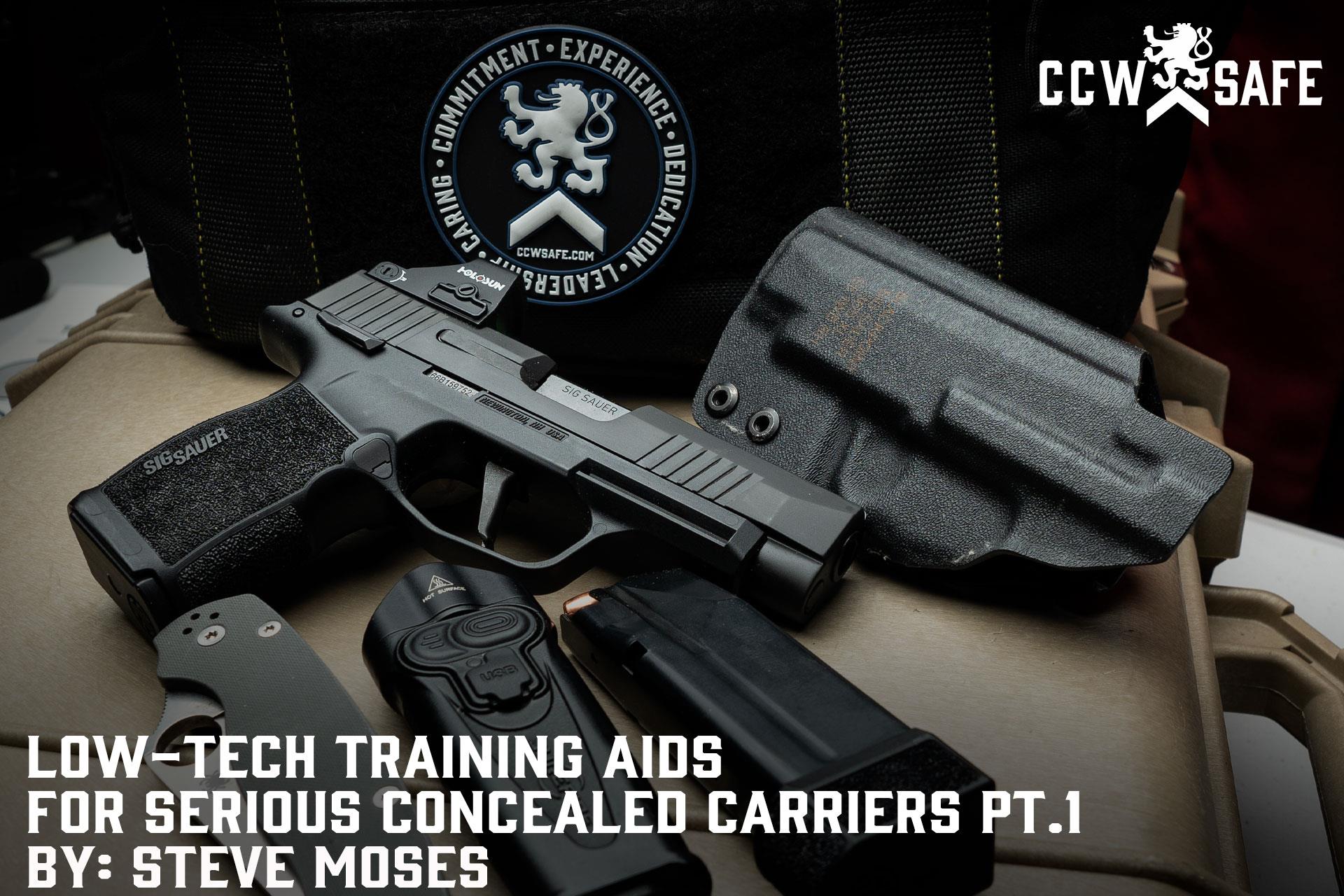
Posted on June 21, 2021
LOW-TECH TRAINING AIDS FOR SERIOUS CONCEALED CARRIERS PT. 1
“Under pressure, you don’t rise to the occasion, you sink to the level of your training.”
I am unsure who it was that first coined that statement. Some sources attribute it to Archilochus, a Greek poet. Regardless, I believe it to be true.
I can readily go out and buy an electric guitar, but completing that purchase certainly does not make me a guitarist. The same is true when purchasing a defensive handgun. It does not matter whether it is a musical instrument or a purpose-built firearm, without continuous practice our level of competence is going to suffer. Incompetence with a guitar is largely embarrassing. Incompetence with a defensive handgun can mean the difference between life and death.
Many concealed carriers believe that practicing with a defensive handgun involves going to a range and shooting expensive ammunition. Actually, much of it does. There is no substitute for frequent live-fire practice when it comes to ensuring that we are properly gripping the gun and following through on our shots. However, the majority of our practice can (and indeed should) take place at home in the form of consistent dry practice.
There is not a better (and less costly) location to get in the number of repetitions required to achieve unconscious competence with our presentation from a concealed holster while focusing on proper grip, sight alignment, trigger control, and follow through. This is also an excellent time to practice a post-shot scan to ensure that other persons are not approaching us from our blind-side. I have been doing this for years, and so far have resisted using training aids like the CoolFire trainer or SIRT Pro pistol simply because I prefer low-tech training aids that are both handy and inexpensive. How is that for a lame excuse?
What I have been using for years are Newbold dummy rounds. Dummy rounds are great for learning how to quickly react to a click when one expected their handgun to go bang. I was taught the Tap-Rack-Bang technique (now referred to as the Tap-Rack-Assess technique) at the Texas Pistol Academy in 1993, and now nearly 30 years later my response to an empty chamber or dead primer is immediate. Back in the day, we had to simulate that in practice by inserting a magazine in the handgun without chambering a round, holster the handgun, and upon the command to engage attempt to fire one round. The response taught was to tap the base of the magazine hard in case it was not seated properly, rack the slide, and get back on target and fire.
Years later, the response became known as Tap-Rack-Assess after a police officer allegedly shot a felon during a gunfight and responded as he was trained during the gunfight. Unfortunately, the felon had stopped shooting by the time the officer was able to clear his pistol when it malfunctioned and supposedly the officer fired anyway. If this is all correct it supports the claim that we don’t automatically arise to the occasion under stress. The largest problem for concealed carriers when training in this manner is that they know exactly when they are about to incur a malfunction.
That is not the case during an actual live fire event if the magazine was not seated properly during an emergency load or a primer failed to ignite. The fix is simple. For live practice, I load two magazines with five live rounds each, but in one magazine I add the dummy. The dummy should not be the first or last round loaded. I close my eyes, shuffle the magazines several times, place both on a flat surface, and then grab one of them without looking and stick in it my magazine pouch. I stick the other one in my gun and chamber the top round followed by either holstering or assuming the ready position of my choice. The drill is simple. Shoot ten rounds into a target non-stop. Two things are going to happen prior to completion of the string: a semi-surprise Tap-Rack-Assess and a reload. Do this at least twice every range session and in a surprisingly short time most concealed carriers find themselves responding to unanticipated stoppages much faster than before.
Many of Tom Given’s handgun classes feature a ten-round training drill called the 3M drill in which the student is required to move offline during the draw, while clearing a Type 1 malfunction, and a mandatory reload. It can also be used during dry practice sessions by first creating a double- feed or stovepipe stoppage. The concealed carrier first uses 3-4 dummy rounds to create a double-feed, and then clears the stoppage followed by inserting the same magazine or a second containing dummy rounds and quickly chambering a dummy round and getting back on target.
A five-pack of Newbold dummy rounds are priced at $8.94 at www.concealedcarry.com. Benefits of these training rounds for dry practice include the following:
- Permits concealed carriers to practice loading and unloading magazines, cylinders, and firearms inside of a home or classroom more safely.
- May prevent damage to the firing pin when performing dry practice.
- Prevents the slide from locking back during dry practice.
Part Two of this article covers two other low-tech training aids whose value greatly outweighs the cost of purchase. I will not go so far as to say that all of the best things in life are free, but I would venture to say that some are surprisingly affordable.
 |
Steve MosesSteve Moses has been a defensive firearms trainer for over 26 years and is a licensed Texas Personal Protection Officer with 7 years of experience performing as shift lead on a church security detail for a D/FW area metro-church. Steve is a co-owner and Director of Training for Palisade Training Group, LLC based in Dallas, Texas. Moses is a retired deputy constable and spent over 10 years on a multi-precinct Special Response Team. He owns multiple instructor certifications, including Rangemaster Advanced Handgun Instructor and Defensive Shotgun Instructor, Red Zone Knife Defense Instructor and Adaptive Striking Foundations Instructor, Modern Samurai Project Red Dot Sight Instructor, and State of Texas Personal Protection Officer Instructor. Steve holds a BJJ Brown Belt in Relson Gracie Jiu Jitsu. He is a content contributor for CCW Safe and writes weekly articles on various subjects of interest to concealed carriers. Moses shoots competitively and holds an IDPA Expert rating. Steve is an annual presenter at the Rangemaster Tactical Conference. |